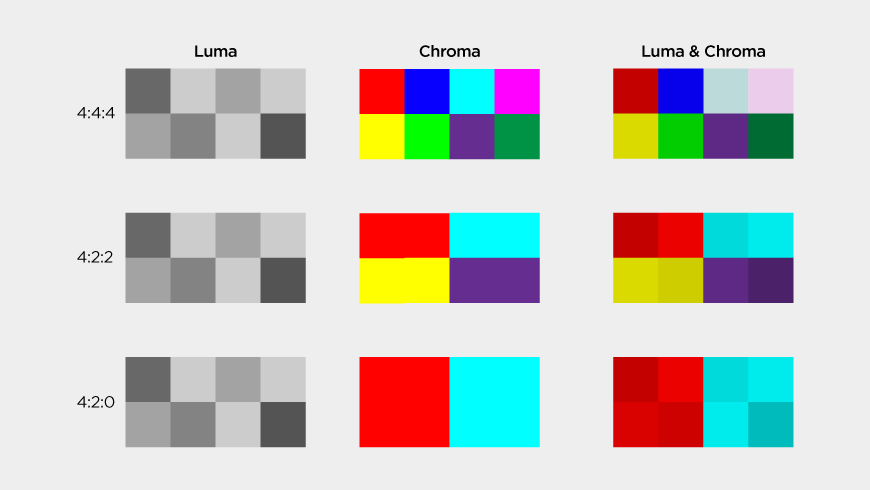
Chroma subsampling is a type of compression that reduces the color information in a signal in favor of luminance data in order to reduce bandwidth usage without significantly affecting picture quality. Chroma subsampling algorithms are designed to take advantage of the human eye’s higher sensitivity to variations in luminance compared to color. A video signal contains luminance (luma) and chrominance (chroma) components. Luma defines the majority of the picture as contrast is what forms the shapes and details visible, whereas chroma or color information that you see on the screen, although important, has less visual impact. By reducing the amount of color information in a video signal to allow more luminance data instead, chroma subsampling allows picture clarity to be maintained while effectively reducing the file size by up to 50%.
Common chroma subsampling formats include:
4:4:4 – uncompressed video with no chroma subsampling, transports both luminance and color data entirely.
4:2:2 – has half of the chroma of 4:4:4 and reduces the bandwidth of an uncompressed video signal by one-third with little to no visual difference.
4:2:0 – has one quarter of the chroma of 4:4:4 and reduces bandwidth of an uncompressed video signal by half compared to no chroma subsampling.